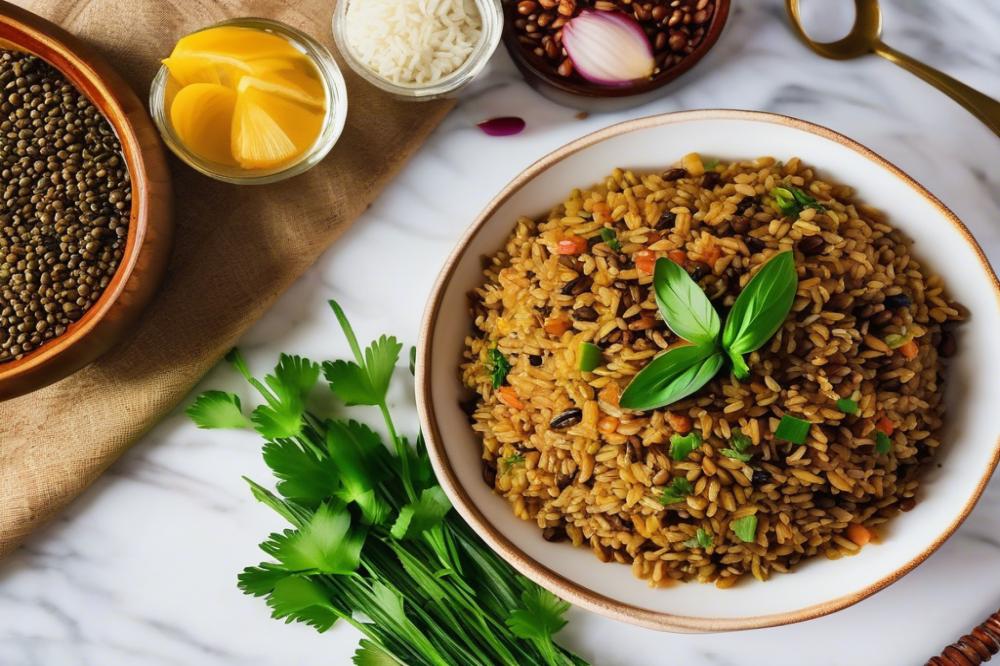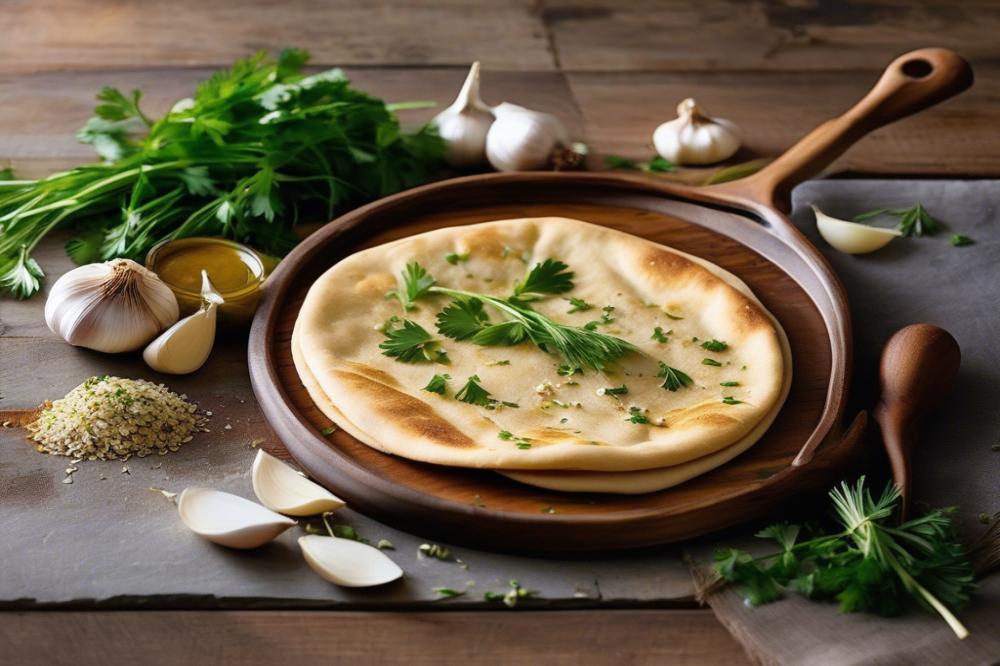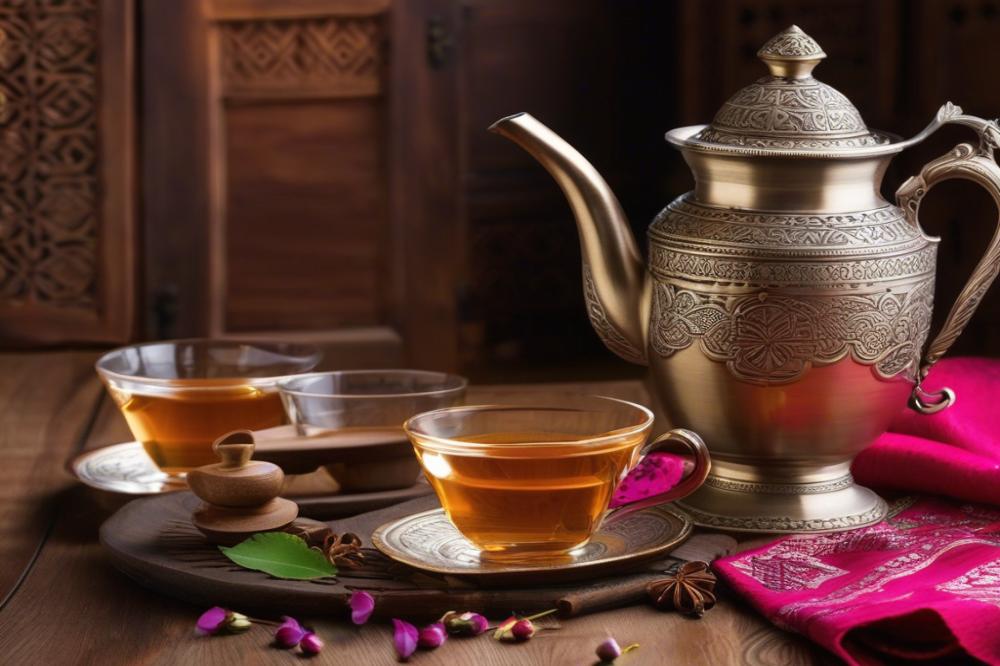Exploring the Flavors of Lebanese rice-pudding-riz-bi-haleeb”>Mujadara rice and lentils
Mujadara is a beloved dish in many Middle Eastern homes. Made from a simple combination of ingredients, this hearty meal showcases the best parts of rice and lentils. As a staple, it has earned its place on tables across the region, providing nourishment and comfort in every bite.
In Lebanese cuisine, rice and lentils hold significant importance. They are often featured not just in main dishes but also in various recipes that highlight their versatility. The use of spices elevates these basic ingredients, transforming them into something special. Flavorful combinations enhance their natural goodness, making them irresistible to many. This dish is an excellent example of how traditional meals can be both simple and satisfying.
When considering healthy eating, the benefits of this vegetarian option stand out. The combination of lentils and rice creates a complete protein, which means it contains all the essential amino acids our bodies need. Those seeking comfort food will find that Mujadara warms the soul, especially during cooler months. It’s the kind of recipe that brings people together, filling homes with delicious aromas as it cooks. Discovering this dish is truly an invitation to enjoy the rich culinary heritage of the Middle East.
Understanding Mujadara
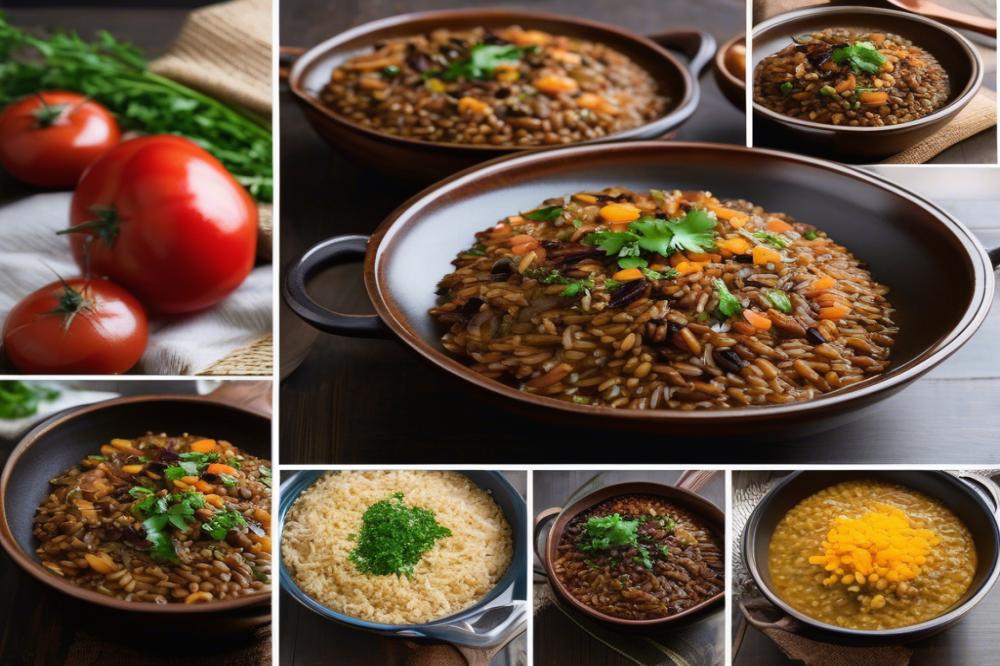
The origin of Mujadara can be traced back many centuries in Lebanese culture. This dish of rice and lentils has been a staple for generations. It is believed to have roots in the Arab world, with mentions in ancient texts. Families have passed down recipes, each adding their own touch. Over time, it became a beloved comfort food that brings people together.
Variations of this food exist across different Middle Eastern countries. In Palestine, for example, it may include additional spices or garnishes like fried onions. In Syria, you might find it served alongside yogurt or salad. Each region offers a different take, showcasing local tastes. Despite these differences, the core ingredients remain the same: rice and lentils. This consistency highlights its popularity.
Ingredients play a significant role in the character of Mujadara. Rice serves as the base, offering a soft, comforting texture. Lentils add protein and contribute to a healthy meal. Spices, however, elevate the dish. Cumin and coriander often create a rich aroma. This careful balance of flavors is what makes it so satisfying. Vegetarians love Mujadara because it’s not only delicious but also nutritious. This meal is filling and can be enjoyed anytime.
Cooking Mujadara provides an opportunity to experience traditional methods. Families gather to prepare the dish, sharing stories and laughter in the kitchen. Recipes may vary from household to household, reflecting personal preferences. Some prefer a spicier version, while others enjoy it mild. No matter the recipe, the essence remains unchanged. Many cherish this dish for its flavors and the warmth it brings to their homes.
Ingredients for Mujadara
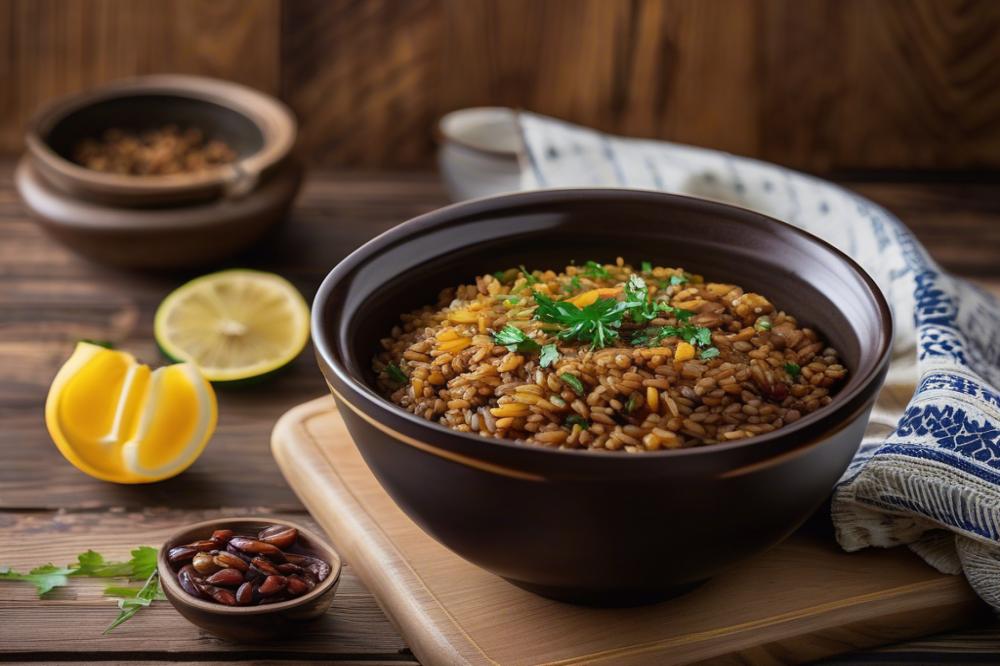
Cooking this classic dish requires a handful of essential ingredients that come together to create a hearty meal. The base consists of:
- 1 cup of brown lentils
- 1 cup of basmati rice
- 4 cups of water
- 2 medium onions, sliced
- 4 tablespoons of olive oil
- 1 teaspoon of cumin
- Salt and pepper to taste
Nutritional Information for Each Ingredient
Brown lentils are a powerhouse of nutrition. One cup contains about 18 grams of protein, making it an excellent choice for a vegetarian diet. Basmati rice, on the other hand, provides carbohydrates that give you energy. Olive oil adds healthy fats, crucial for heart health. Onions contribute flavor and contain antioxidants. Cumin not only spices up the dish but also offers digestive benefits. Salt and pepper, while simple, enhance the overall taste.
Health Benefits of Lentils and Rice
Lentils are fantastic for your body. They are rich in fiber, which aids digestion. Their low glycemic index helps maintain steady blood sugar levels. Rice complements lentils by providing a source of essential amino acids. Eating this combination creates a complete protein, making it ideal for those who follow vegetarian recipes. The overall mix becomes a comforting meal that nourishes both body and soul, fitting perfectly within the realm of healthy Middle Eastern comfort food.
Cooking Instructions
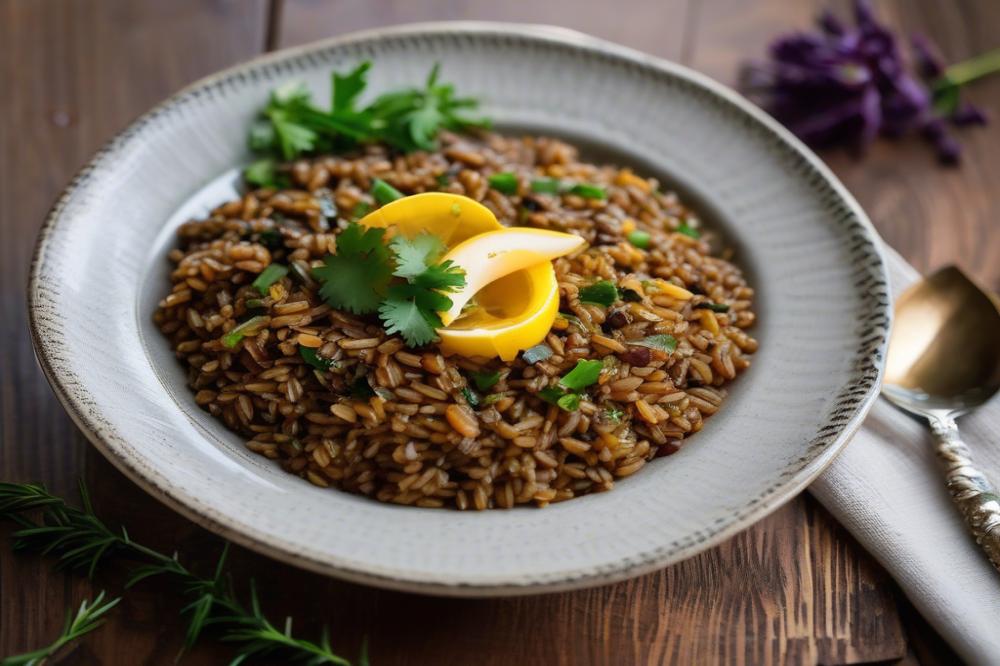
Step-by-step guide to prepare Mujadara
Before you start, gather all your ingredients. You will need rice, lentils, onions, and a mix of spices. Begin by rinsing the lentils under cold water. This removes any dust or debris. Next, soak the lentils for about 30 minutes. While they soak, chop the onions thinly. You will sauté these until they are golden brown.
Heat some olive oil in a large pot. Add the onions and cook them slowly. Stir frequently to avoid burning. After about 15-20 minutes, they should turn a rich, caramel color. Now, it’s time to add the spices. Cumin and coriander work wonderfully in this dish. Sprinkle them in and mix well for about a minute.
Once your onions are ready, add the soaked lentils to the pot. Pour in three cups of water. Let this mixture cook over medium heat until it begins to boil. After that, reduce the heat and simmer for 15 minutes.
Then, incorporate the rinsed rice into the lentils. Add a bit more water as needed. Cover the pot and steam for another 20-25 minutes until the rice is fluffy. Turn off the heat, letting it sit for about five minutes before serving. This resting time allows the flavors to mingle beautifully.
Tips for achieving the perfect texture and flavor
To achieve a great texture, use long-grain rice. Jasmine or basmati rice are ideal choices. Ensure the lentils are slightly firm; they shouldn’t be mushy. This adds bite to each spoonful.
To enhance the flavor, adjust spices to your liking. Some people enjoy a pinch of cayenne for heat or a squeeze of lemon juice for acidity. Season with salt and pepper while cooking. Always taste as you go to find your perfect balance.
Another key tip is to let the pot sit after cooking. This allows for steam to finish cooking everything gently. If you want an extra layer of flavor, consider roasting some spices before adding them to the onions.
Serving suggestions and pairings with other Lebanese dishes
Serving mujadara is simple and versatile. Serve it warm, garnished with crispy fried onions on top. This adds a delightful crunch.
Pair it with a side salad, like tabbouleh. The freshness of the salad balances the rich flavors of the dish. You can also serve it with pickled vegetables, which add a nice tang.
Consider accompanying it with yogurt or feta for creaminess. This combination makes the meal more satisfying. Some people even enjoy it with pita bread for a complete experience.
Mujadara stands well on its own as a hearty vegetarian comfort food, but these pairings elevate it further. Explore the variety of Middle Eastern flavors that complement it beautifully.
Flavor Profile of Mujadara
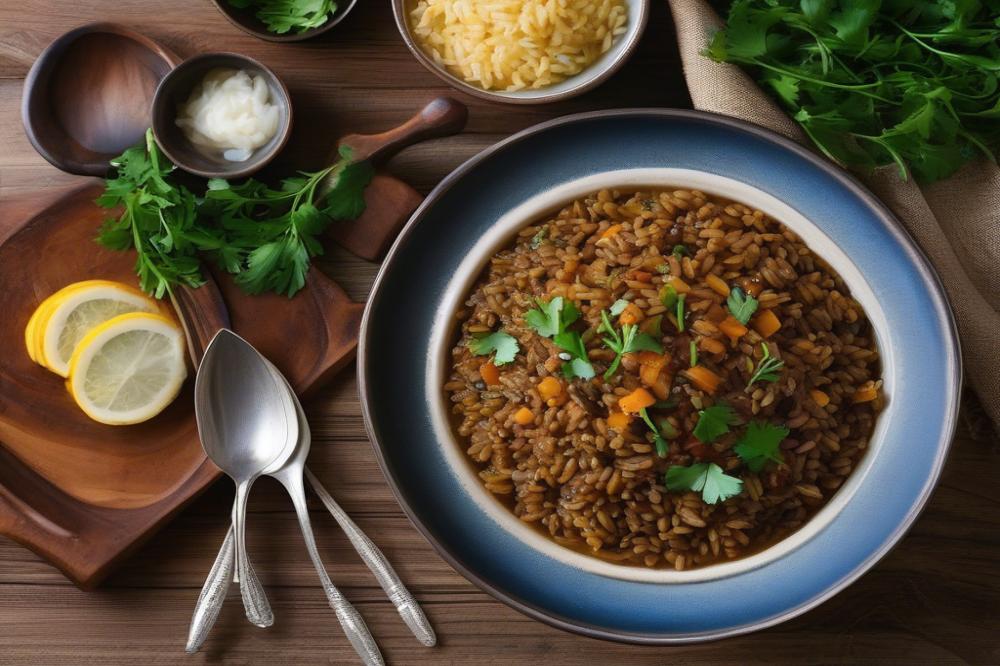
The taste of Mujadara is both hearty and satisfying. Combining rice and lentils creates a blend that is filling while retaining a lightness. The subtle earthiness of the lentils complements the fluffy grains of rice beautifully. Aromas wafting from the pot during cooking signal a meal that promises warmth and comfort. When you first bite into it, the experience is like a warm hug for your stomach.
Spices play an essential role in crafting the dish’s flavor. They add layers of complexity that elevate it beyond a simple grain and pulse. Common spices include cumin and coriander, which provide an aromatic brightness. The careful balance of spices awakens the senses and invites a deeper exploration of taste. Each ingredient works harmoniously, creating a delicious experience that is truly memorable.
Caramelized onions are a standout element that enhances Mujadara significantly. Sweet and rich, these golden morsels bring depth to each bite. Their flavor contrasts wonderfully with the earthiness of the lentils. This combination creates a dish that bursts with flavor and has a pleasing texture. Without these onions, the dish would lack its signature identity.
Sharing this meal carries cultural significance in Middle Eastern traditions. Families often serve Mujadara during gatherings, reflecting their values of togetherness. It symbolizes comfort food that is both accessible and inviting. In this way, the dish transcends mere sustenance. Each shared plate of Mujadara tells a story of family, love, and celebration, reinforcing connections among diners.
Variations and Adaptations
Mujadara is a beloved dish in many Middle Eastern countries, with each region adding its own twist. In Lebanon, the classic combination of rice and lentils is often enhanced with caramelized onions. However, in neighboring Syria, some recipes might include different spices, giving it a distinct taste. In Palestine, it’s not uncommon to see a version topped with yogurt or even served with pickled vegetables, adding layers of flavor to the dish.
Dietary preferences have also influenced many modern recipes. Those following a vegan lifestyle can enjoy this dish without compromising taste. Simply skip any dairy toppings, and focus on using quality spices and vegetable broth for cooking. Gluten-free options are easily accessible too. Rice and lentils are naturally free of gluten, allowing anyone with dietary restrictions to savor this healthy meal.
Seasonal ingredients can transform the basic recipe. During certain times of the year, fresh herbs like parsley or mint can be added for a burst of freshness. In the fall, roasted root vegetables might be mixed in for added texture and flavor. These adaptations not only celebrate local produce but also enhance the overall experience.
Cooking techniques also vary among families and regions. Some might prefer cooking the lentils and rice together for a united flavor, while others may cook them separately to maintain distinct tastes. These methods reveal personal preferences, making each plate of this comforting dish uniquely special.
Experimentation is key when trying to make Mujadara your own. Adding nuts such as pine nuts or almonds can introduce a delightful crunch. Some might even choose to incorporate spices like cumin or cinnamon for warmth. These variations show how one dish can take on countless forms, providing endless opportunities for creativity in the kitchen.
Final Thoughts on a Flavorful Dish
The delightful flavors of Mujadara come together in a beautiful harmony of spices, caramelized onions, rice, and lentils. This dish is more than just food; it tells a story of tradition and comfort. Each bite offers a warm, earthy taste, a reminder of the rich culinary history of Lebanon.
Health benefits add to its appeal. The blend of lentils and rice creates a complete protein, making it an excellent choice for vegetarians and anyone looking to eat wholesome meals. Packed with fiber and nutrients, this dish promotes digestion and overall well-being. Enjoying Mujadara can be as rewarding for your body as it is for your taste buds.
Trying your hand at preparing it at home can be a fun and fulfilling experience. Gathering the ingredients is straightforward, and the preparation allows for creativity. You can adjust spices to suit your preferences, exploring new flavors and intensities. Sharing this dish with family or friends can help create wonderful memories.
Mujadara finds its place not only in Lebanese cooking but also in the broader realm of vegetarian cuisine. This simplicity and richness make it a staple, appreciated across various cultures. Whether served as a main course or a side dish, it brings everyone together around the table. In the ever-evolving world of food, this dish remains a cherished classic.

